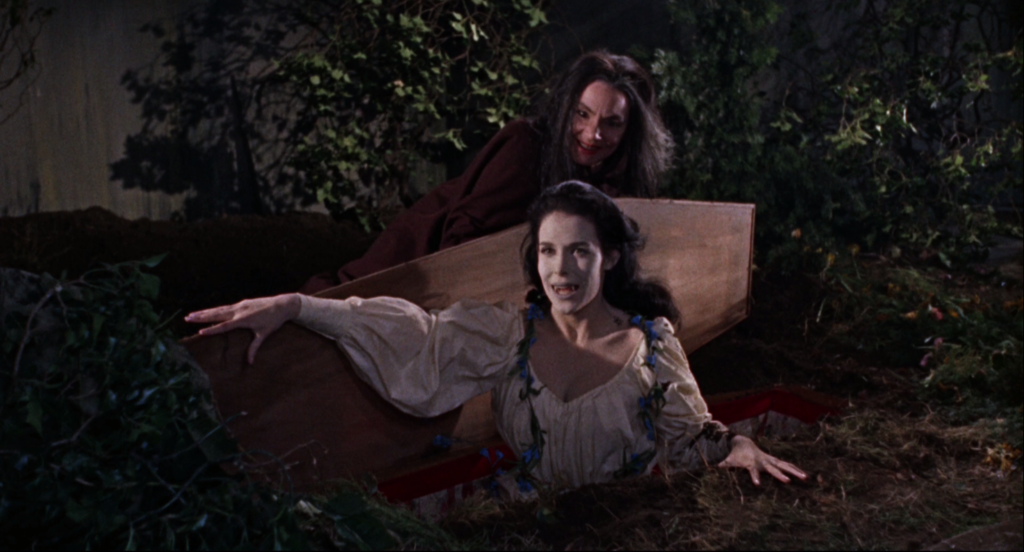
The Brides Of Dracula (1960) is an underrated Terence Fisher contribution to the Hammer Horror canon. Envisioned as a direct sequel to the highly successful Horror Of Dracula (1958), The Brides Of Dracula disappointed some due to the absence of Christopher Lee. In this regard the title is rather misleading since there is but one bride in the film and Dracula is entirely absent.
Of Terence Fisher’s Hammer films, The Brides Of Dracula is among the most sensual. Repressed sexuality, a hallmark of Fisher’s Hammer pictures, seems about to boil over in every scene of The Brides Of Dracula, particularly in those scenes with Yvonne Monlaur. The notion that vampirism is a metaphor for the loss of sexual inhibition that is the luxury of the aristocracy that has always been central to the vampire myth takes center stage in The Brides Of Dracula in the absence of the larger than life presence of the monster Dracula. Free of that cultural baggage, Fisher makes a vampire film that gets down into the essence of the folklore behind Bram Stoker’s greatest creation.
Baron Meinster (David Peel), who fills the Dracula role, is a new creation and a fresh take on the trope of the aristocracy as villains. The Baron’s Oedipal complex, his wealth as a landowner, and his rakish behavior are all facets of Gothic literature and lore that have been compressed into a new, more tangible variation on the Dracula character. The operatics of history that loom over Dracula are dispensed and a more common brand of evil is discovered. Baron Meinster isn’t so much a mythic monster but a monster of a man who abuses his privilege at the cost of his tenants’ lives.
To combat the Baron, Peter Cushing returns as Van Helsing. In his reprisal of this role Cushing softens the character, emphasizing his gentle tone and chivalrous behavior. The manic, single mindedness of the Van Helsing in Horror Of Dracula has been utterly transformed. This change in Cushing’s approach to the character seems to have been born out of a desire to further differentiate the character from Cushing’s most recognizable role for Hammer as Baron Frankenstein.
But the most alluring part of any Hammer Horror film is that glue which connects all of these different aesthetic pieces together, the production design. A Hammer Horror film, including The Brides Of Dracula, looks like a nineteenth century illustration for a Gothic novel come miraculously to life in bold technicolor. The sets often defy any spatial logic in favor of atmospheric evocations that match the fantastique artifice of the lighting and colors used to photograph the sets. The Brides Of Dracula is an excellent example of this singular phenomenon wherein the tradition of Gothic Horror is rendered as the same kind of wholly immersive fantasia of an MGM musical.
The Brides Of Dracula, a singular rendering of psychosexual horror in Dracula motifs, remains a high water mark of the golden age of Hammer Horror. Of Fisher’s numerous Hammer outings, The Brides Of Dracula ranks alongside The Curse Of Frankenstein (1957), The Devil Rides Out (1968) and Frankenstein Created Woman (1967) as some of the greatest and most influential British horror films ever made.
